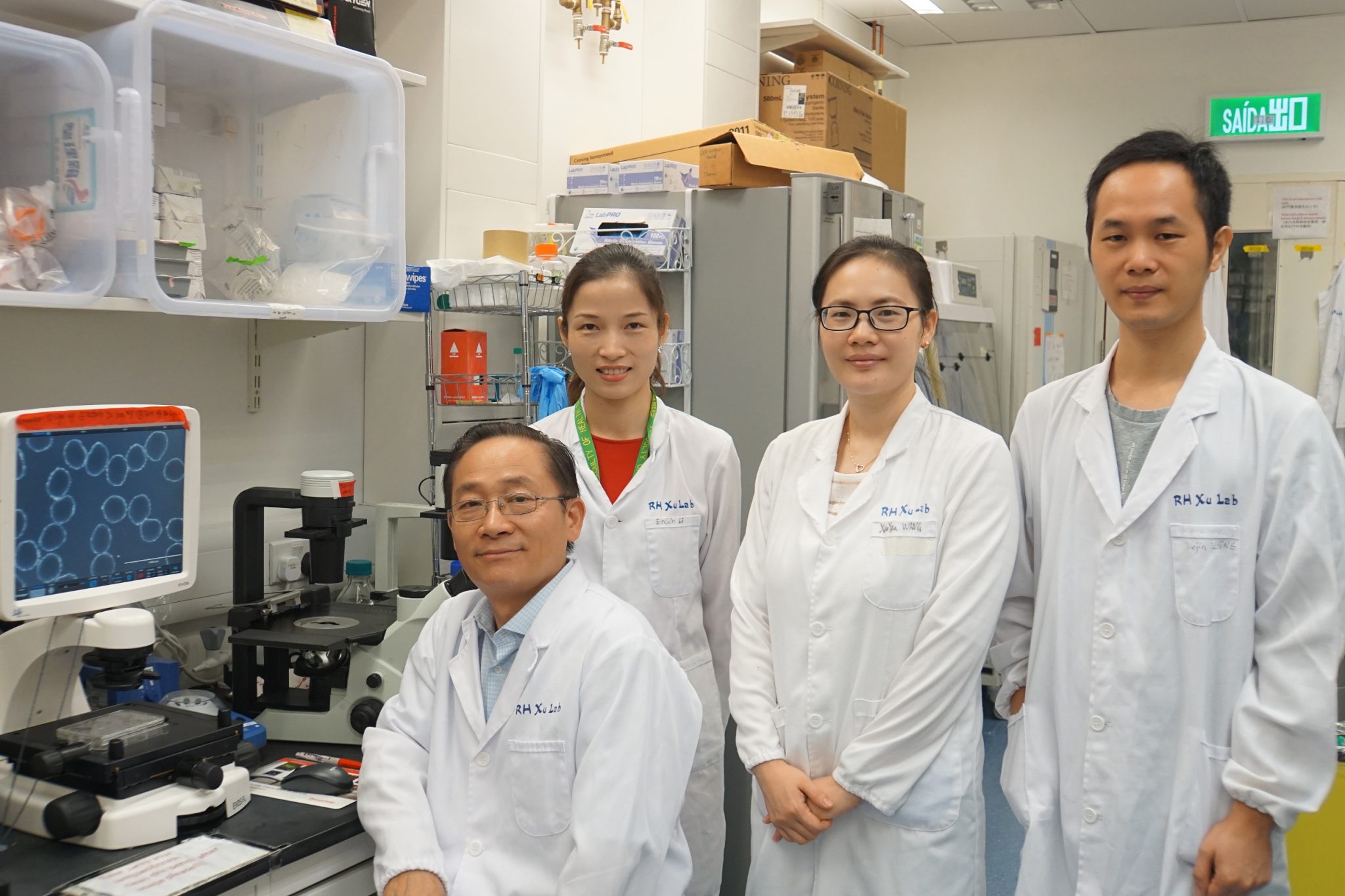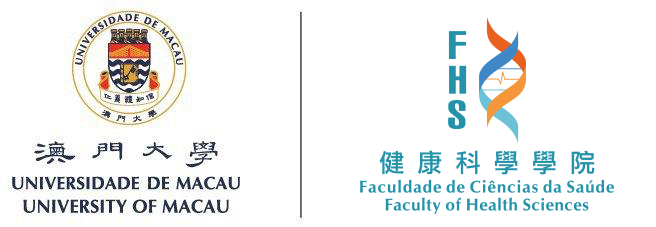The Faculty of Health Sciences(FHS), University of Macau(UM), has reported a new method in which mesenchymal stem cells (MSCs) differentiated from human embryonic stem cells (hESCs), when used as spheres but not dissociated cells, promote skin wound healing following topical application onto the wound. The whole process is noninvasive, efficient, and independent on donation of fetal or adult tissues such as umbilical cord or bone marrow as traditional sources for MSCs. This study is published in the international renowned journal Theranostics (impact factor 8.063).
This study entitled as “Noninvasive application of mesenchymal stem cell spheres derived from hESC accelerates wound healing in a CXCL12-CXCR4 axis-dependent manner” and was led by Prof. Ren-He XU of the Faculty of Health Sciences, University of Macau. The first authors are Xiaoyan WANG and Bin JIANG, Ph.D. students from University of Macau and Dr. Huiyan SUN, an assistant professor of the Artificial Intelligence Institute of Jilin University were also involved in the research.
This team reported in Biomaterials in 2017 that human MSC spheres can survive for up to 10 days under an ambient condition through a “hibernation”-like mechanism, which established a new method for stem cell storage and transportation at room temperature. This study further demonstrates that the MSC spheres can be directly applied to skin wounds. Even in hypoxic and inflammatory environments of the wound, the stem cell spheres can survive much better than dissociated cells and penetrate quickly into the wound to help reepithelization and revascularization. Compared with the traditional method of stem cell injection, the survival rate of transplanted cells is greatly improved, and the topical application of the stem cell spheres greatly alleviates the pain of the transplantation process.
It has been known that exogenous MSCs can promote wound healing. However, most of the transplanted stem cells are derived from the bone marrow, fat and umbilical cord of human body. The cell sources are limited, cell quality and vitality vary, there is a risk of pathogen transmission, and some isolation methods may cause pain to the donors during the collection process. This study used MSCs differentiated from hESCs, which removes the limitation of MSC sources, and the hESC-derived MSCs have stronger viability and more consistent functions than MSCs derived from the somatic sources.
At present, the delivery of stem cells mainly relies on intravenous or local injections. These methods bring inconvenience and pain to the patients, and the injected cells have low vitality and rarely migrates to the target tissue. In this study, stem cells are directly dropped onto the wound in the form of spheres, the transplanted spheres are visible at the early stage, and then rapidly migrate to underneath the wound, and recruite epidermal cells at the edge of the wound to expand and migrate to the center of the wound. This new technology is convenient, safe and efficient. Combined with the characteristics of spheroid cell storage and transportation under ambient conditions, it is expected to provide a new way for skin wound treatment by using stem cell spheres. Transplanted stem cells gradually disappear after the wound heals. In order to further improve the biosafety of the method, these researchers inserted a suicide gene into the stem cell genome, which can kill the remaining stem cells and their derivatives after the therapy by injecting a small chemical drug that triggers the expression of the suicide gene.
This project is funded by the University of Macau and the Macao Science and Technology Development Fund. A patent on the method has been applied. For more information about this report, please read http://www.thno.org/v09p6112s1.pdf. The related research achievement has been reported by Macao Daily News and other local media, for details please visit: https://h5.newaircloud.com/detailArticle?sid=aomen&newsId=8543406_10621_aomen,
https://news.gov.mo/detail/en/N19Hb3LVr6?3, http://www.vakiodaily.com/news/view/id/339943,

A new method to treat skin wounds has been developed by the research team of FHS, UM

